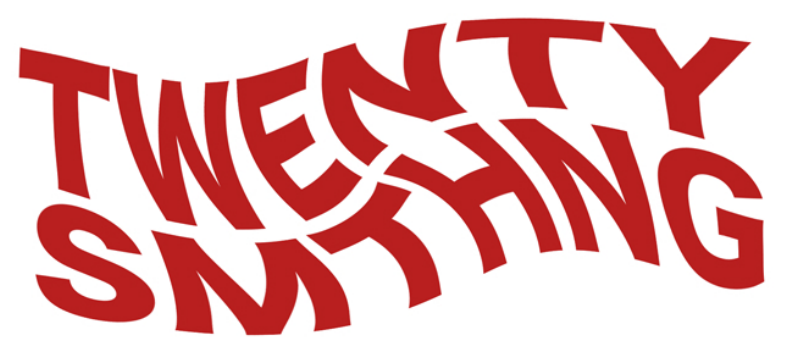
When I was 13, I started watching ‘The Fosters’ on my mums old iPad. I remember one of the main characters, Jesus Foster, taking medication in one of the early episodes for his ADHD – I had never heard that term before. The Fosters wasn’t the only TV show I watched growing up that spoke about ADHD, but they all showed the same representation; teenage boy, talks a lot, constantly moving and fidgeting. When I was 20, I started to find it really difficult to focus on my studies. This was by no means a new issue, I was always a procrastinator and a daydreamer, I zoned out in classes, I only ever revised a day before my exams and pulled frequent all-nighters to start and finish essays. There was something about being locked in a house for a year and having to do all my work from home that just turned off my brain, almost as if I couldn’t remember what it meant to be a student. After complaining about not being able to focus, several friends bought to my attention that I could have ADHD, but surely not, right? I was a 20-year-old woman not a teenage boy and most importantly I had never recognised any of the hyperactive symptoms within myself that are often seen as an early warning sign for an ADHD diagnosis in young and teenage boys; in fact, I was quite the opposite! – Tired and lethargic. Regardless, I did some research anyway – this is what I found:
- The ADHD diagnoses ratio of males to females is 4:1
- It’s easier to diagnose young boys with ADHD as their symptoms are external for example being impulsive or overactive whereas girls have internal symptoms like inattentiveness and low self-esteem.
The more I read about ADHD, about how different the experience is for each person, the more I began to see how my struggles with learning aligned with the difficulties that were specific to an ADHD diagnosis in girls. I became hopeful of the fact that maybe this is something can be fixed before it’s time to graduate – after all, it was affecting my education the most. As per usual and in alignment with my symptoms, I put off trying to get an appointment for a while because what if I was just imagining the symptoms? What if I don’t actually have this disorder and I’m just not cut out for academia? What if I’m just lazy and I’ve just been looking for a scape goat? After more missed deadlines and conversations with friends who encouraged me to at least speak to a professional, I was referred to a learning disability clinic. By this point, I was 21 years old and already started my last year of university so perhaps it was too late, but my appointment was at a private clinic so maybe I didn’t have to deal with the years long NHS waiting list. A 3-hour appointment consisting of stuttering and sweating later, I left the office with two new diagnoses’: ADHD and Dyspraxia – another learning difficulty that I had not yet heard much about yet clearly suffering from.
ADHD, also known as attention deficit/ hyperactive disorder, is a learning disability which effects concentration, organisation, and time management. Other side effects of ADHD can manifest in the form of restlessness as well as sleep and anxiety disorders. Dyspraxia, or developmental co-ordination disorder, is a disorder which effects movement and co-ordination. It impacts a person’s ability to balance, play sports and even learn to drive. Other effects of dyspraxia which aren’t necessarily physical are lack of time management skills, difficulty to learn new skills and function in social situations. Regardless of whether someone suffers from a learning disability or not, every one’s brain works differently. However, there is the issue of education being traditionally geared towards neurotypical brains – people who don’t suffer from any form of atypical thought or behaviour – which ultimately makes anyone struggling with the symptoms above to experience an even greater battle with their education.
Initially, I was relieved, it was good to know and at least now I could get treatment. However, the more I sat with my diagnoses and the more I learnt about it, the more annoyed I became with myself and with the education system for failing me. I was in school for the majority of my living memory, how did no one notice? My grades were never good enough to be considered a gifted student, but they weren’t bad enough for teachers to help me more. Why did they just accept that I was mediocre? Why was I not pushed as hard as all my smart friends? Was I just not worth it? And why do I have to wait another 2 years on an NHS waiting list to be treated, despite already having a diagnosis? According to the charity ‘ADHD Action’, a third of adults paid for a private diagnosis due to a lack of ADHD services in their area, a further 37% paid because waiting lists are too long – almost 7 years in certain parts of the UK. My academic life was quickly coming to an end, and I had to watch myself continue to struggle. I couldn’t do anything about it, and neither could anyone else. I needed to accept that without the professional help I need I was going to keep struggling with my work, I was going to keep missing deadlines and procrastinating work and I was going to graduate but never reaching my full potential.
In the months that followed my diagnoses, I did my fair share of researching and obsessing over what it’s like to live with a learning disability – especially when you didn’t know you had one for most of your life. I learnt that no two people have the exact same experience, which is maybe why I didn’t notice for so long. I found myself thinking back to every moment in my life where I felt like I was not good enough compared to my peers and I created a mental list of what living with an undiagnosed learning disability was like: having ADHD is knowing I have to work, but physically and mentally being unable to start, it’s laying in bed at night not being able to sleep because I just have so much to do but not being able to get up and do it. It’s my second-year journalism teacher using the word ‘sloppy’ to refer to my writing –because the lack of organisation isn’t just a physical thing, it’s mental too -and suddenly not wanting to write or share a piece of work ever again and scrapping my plans to pursue journalism after graduation. It’s constantly feeling like I’m faking it just so I can have something to blame my laziness on. My lack of motivation to do anything had such a negative impact on my mental health and self-worth. I watched all my friends achieve high grades while I couldn’t bring myself to open a laptop and start working. I felt as though I’m not good enough in any part of my life just because I struggled academically and that it was my fault for letting it go on without a diagnosis for so long, for not being allowed the time or opportunity to explore the best-suited way for me to learn as an individual and independent student.
It was so easy to feel like there was no hope and to give up, but I found that it is possible to live with an ADHD diagnosis. Once I had told my friends and family, I felt a weight lift off my shoulders; I was able to turn to them when I was feeling overwhelmed or needed help completing tasks. Talking about it made it easier to understand that I’m not lazy or any less intelligent or capable than my peers. I just had different ways of working and organising myself than other people around me and that was okay. While there is no ‘cure’ for ADHD there is a variety of medications and therapies which can help with the symptoms. Medication can offer relief from impulsiveness and restlessness as well as aid with concentration. Therapy can help treat additional mental health issues, such as anxiety, which come with ADHD. Finding myself on a long waiting list for these treatments was difficult at first – all I could do was wait for that phone call to schedule my appointment – however, I have found that there are plenty of charities and organisations with resources and help groups to support adults who have ADHD such as ADHD UK, the UK adult ADHD network and ADHD action.
Follow us on Instagram to tell us what you think.
